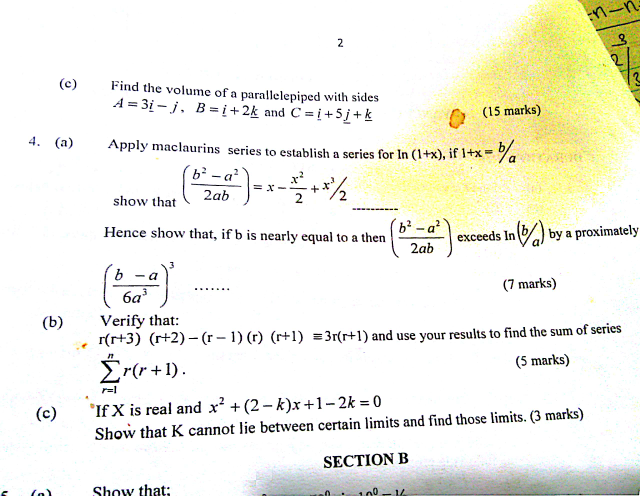
AllQuestion and Answers: Page 1311
Question Number 83242 Answers: 0 Comments: 3

Question Number 83240 Answers: 0 Comments: 1

Question Number 83235 Answers: 0 Comments: 2

Question Number 83229 Answers: 0 Comments: 4

Question Number 83226 Answers: 1 Comments: 1
Question Number 83225 Answers: 0 Comments: 1
Question Number 83214 Answers: 1 Comments: 0
Question Number 83213 Answers: 0 Comments: 0
Question Number 83209 Answers: 1 Comments: 0
Question Number 83206 Answers: 0 Comments: 2
Question Number 83205 Answers: 0 Comments: 2
Question Number 83204 Answers: 0 Comments: 1
$$\int_{{t}−\mathrm{1}} ^{{t}} {ln}\left({x}!\right){dx}=? \\ $$
Question Number 83202 Answers: 0 Comments: 4
Question Number 95177 Answers: 0 Comments: 7

Question Number 83189 Answers: 0 Comments: 6
Question Number 83188 Answers: 1 Comments: 0
Question Number 83166 Answers: 2 Comments: 2
Question Number 83159 Answers: 1 Comments: 5
Question Number 83156 Answers: 1 Comments: 2
$${find}\:{the}\:{derivtive}\:{of}\:{y}={e}^{\mathrm{cos}\:{x}} \\ $$
Question Number 83149 Answers: 0 Comments: 3
Question Number 83164 Answers: 2 Comments: 2
Question Number 83146 Answers: 2 Comments: 0
Question Number 83145 Answers: 1 Comments: 1
$$\:\underset{\:\mathrm{1}} {\overset{\mathrm{4}} {\int}}\:{e}^{\sqrt{{x}}} \:{dx}\:= \\ $$
Question Number 83144 Answers: 1 Comments: 0
Question Number 83139 Answers: 0 Comments: 0
Question Number 83131 Answers: 0 Comments: 3
$${y}=\boldsymbol{{x}}^{\mathrm{4ln}\:\boldsymbol{{x}}} \\ $$
Pg 1306 Pg 1307 Pg 1308 Pg 1309 Pg 1310 Pg 1311 Pg 1312 Pg 1313 Pg 1314 Pg 1315
